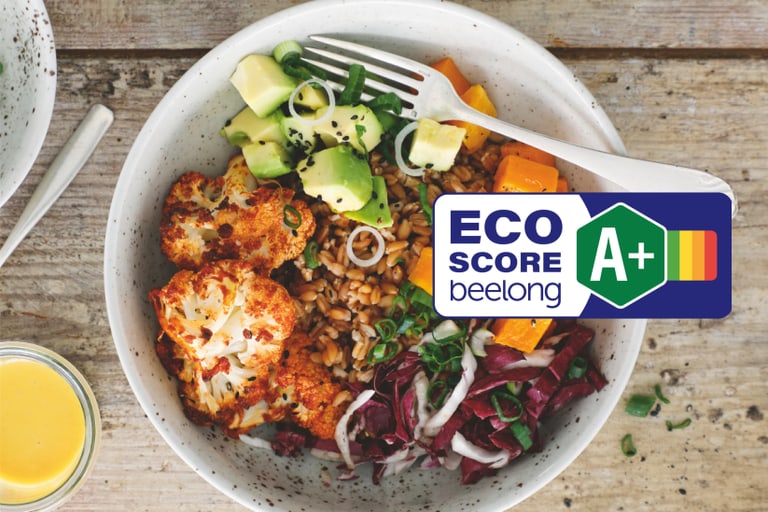ECO-SCORE® by Beelong
The ECO-SCORE® by Beelong provides simple information about the environmental impact of food, taking into account the latest scientific findings and the information available on the market.
Transparency, awareness-raising and good partnerships are an important part of SV's sustainability strategy. With our latest partner Beelong and its ECO-SCORE® method, we support our guests in choosing the most environmentally friendly menu in our restaurants. ECO-SCORE® by Beelong assesses the environmental impact of food and dishes, including the newly separately reported CO₂ emissions - from production to the restaurant - and makes this visible in a simple and transparent way.
CO₂ emissions are a central part of the environmental impact of a menu and thus also of the ECO-SCORE®. To give our guests even more guidance and clarity about the impact on the climate, the ECO-SCORE® now also shows the CO₂ value separately. This value shows how many greenhouse gas emissions - measured in CO₂ equivalents (CO₂e) - are generated during the production of a menu: from the production of the individual ingredients to the restaurant.
The CO₂ value is given in kilograms per menu and is based on well-founded life cycle analyses by our partner Beelong. In this way, we not only create additional comparability, but also raise awareness of the ecological footprint. In this way, we promote conscious, climate-friendly nutrition - not by doing without, but by providing transparent information and freedom of choice.
Important: The CO₂ value is only part of the overall assessment. In addition to CO₂ emissions, the ECO-SCORE® takes into account other ecological criteria such as seasonality, origin, cultivation method, animal welfare and packaging.
With the help of the ECO-SCORE® method, we accompany our guests on their way to eating as environmentally friendly as possible. All products used in our menus are rated and classified on a simple traffic light scale from A+ to E-. This results in an overall score for each menu, which we communicate transparently to our guests in the restaurant. The following assessment criteria are taken into account in the ECO-SCORE®.
ECO-SCORE® provides a life cycle analysis of each product from the field to the plate. The analysis is based on data from the World Food Database, ecoinvent and Agribalyse, as well as real data collected on food products (composition, production methods, distances traveled, etc.). Taking all these assessment criteria into account, a product can achieve a maximum total score of 100 points. This score is then translated into a traffic light scale from A+ to E-.
When awarding points, a distinction is made between the five environmental criteria and the criteria for biodiversity and animal welfare.
Standardized calculation and weighting of the five environmental criteria:
A product can achieve a maximum of 80 points. Additional bonus and penalty points for other criteria are added to the score:
The evaluation of the ingredients used for Spaghetti Napoli results in an overall score of B+. At product level, the score is calculated per calorie, which is why in this example salt without calories receives a low score of E. This score is then displayed as a traffic light or individual letter on the restaurant menu.
The overall score of B+ for this menu is recommended for a sustainable diet. You can therefore choose the Spaghetti Napoli with a clear conscience.


The ECO-SCORE® by Beelong provides simple information about the environmental impact of food, taking into account the latest scientific findings and the information available on the market.